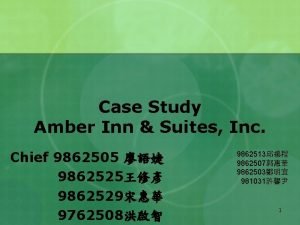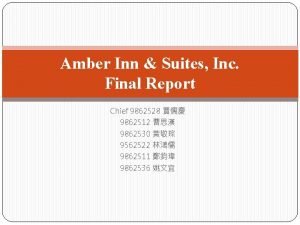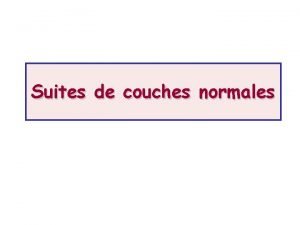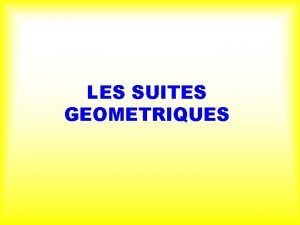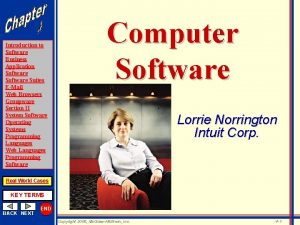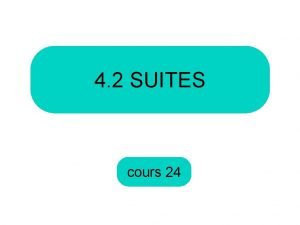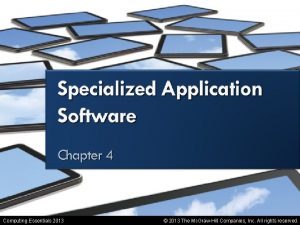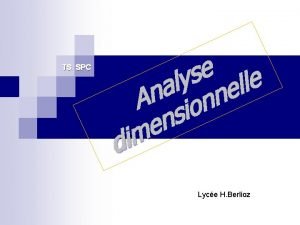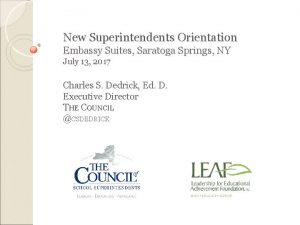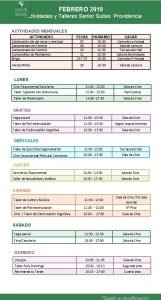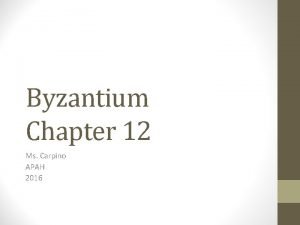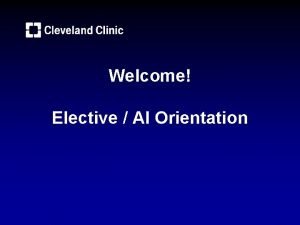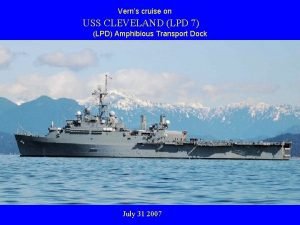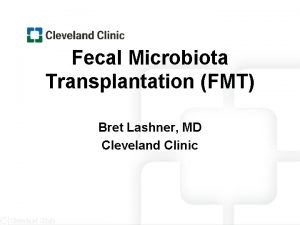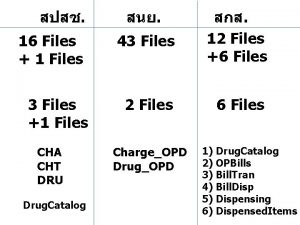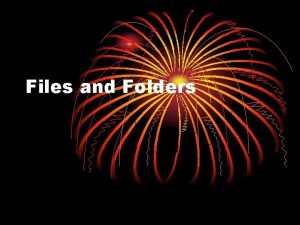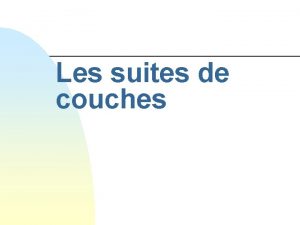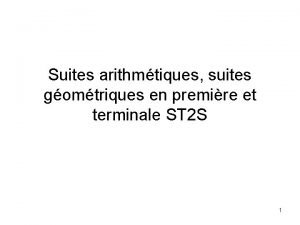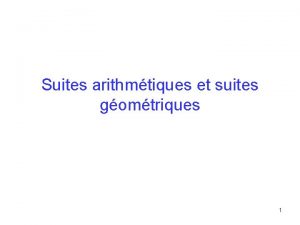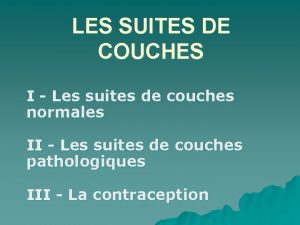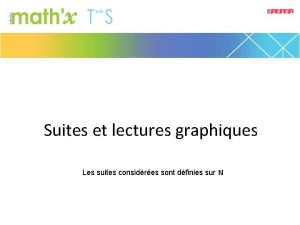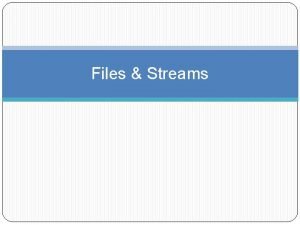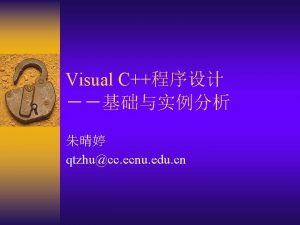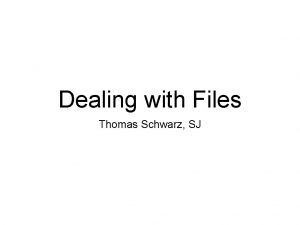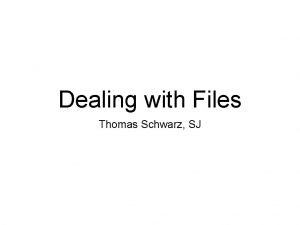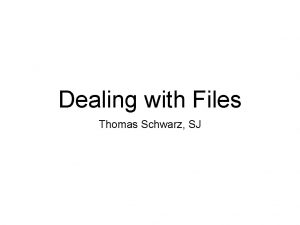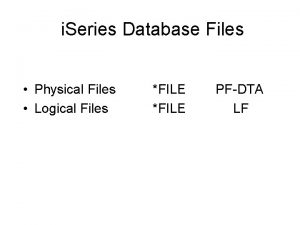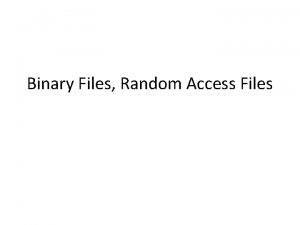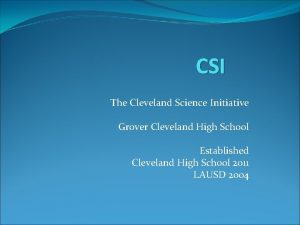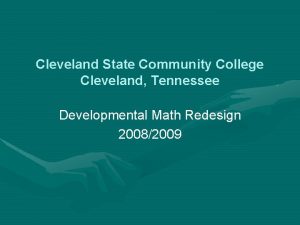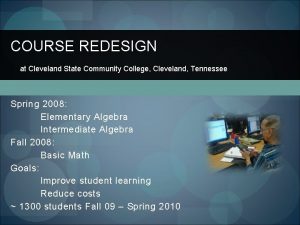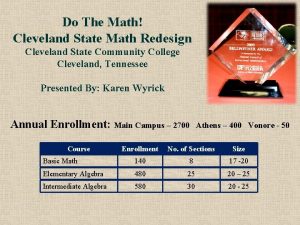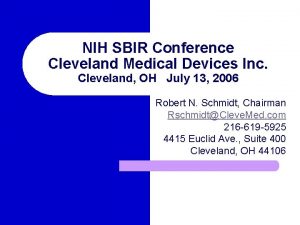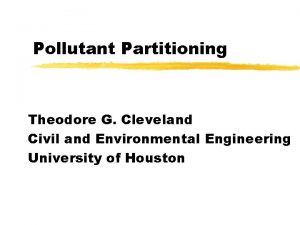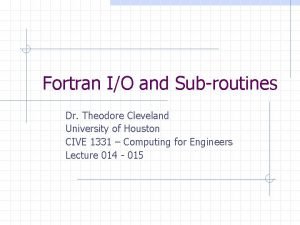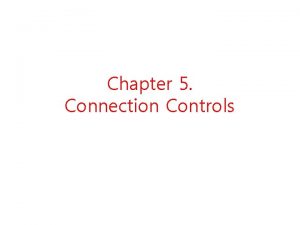Files Filenames and Office Suites Dr Theodore Cleveland































- Slides: 31

Files, Filenames and Office Suites Dr. Theodore Cleveland University of Houston CIVE 1331 – Computing for Engineers Lecture_003

File Names A filename under MS-DOS consisted of an 8 -letter “name” and a 3 -letter extension. This is sometimes referred to as 8. 3 or “eight dot three” filenames 8. 3 filenames do not support spaces, filenames must be made with a printable ASCII character. When writing a program, it is important to use the 8. 3 convention due to limitations of programming and scripting limitations. Windows 95+/Unix support from 32 to 255 characters filenames, which support the use of spaces in the filename.

File Types (File Extensions) The letters after the last period in a filename are referred to as the extension Extensions are generally limited to three characters for cross-system compatibility. An extension DOES NOT determine the file type. (e. g. changing the extension of a file will not change the contents or type of file) There should however be a correspondence between the file type and the extension. Note that the extension is commonly used to refer to the file type. (e. g. a “. xxx” file is often referred to as an “Ex Ex Ex” file)

File Types (continued) Windows uses the extension of a file to determine what program to use to open the file. In Windows Explorer, click >>Tools>>Folder Options>>File Types tab Windows will even change the icon associated with a file extension to reflect the application used to open the file

File Types Virus Warning By default some installations of Windows will hide file extensions. This practice allows many trojan horses to masquerade as a different file type. Consider the file: Anna. Kournikova. jpg. vbs Which would appear as “Anna. Kournikova. jpg” on the desktop

Office Applications Office applications are programs that facilitate officetype activities. An office suite usually contains: A word processor n A spreadsheet program n A database management system (DBMS) n A presentation maker (slides) Modern spreadsheets are quite capable of engineering calculations and are frequently used for real work. n The applications that will be introduced in this class are MS Word, MS Excel, MS Access, and MS Power. Point. The Open. Office. org suite of software (UNIX/LINUX) can read and write MS compatible files so the reliance on MS products is somewhat artificial.

Windows Standard Interface There are some common features that span the Microsoft Office suite. n n n Menus Toolbars Help Shared Menu Items Shortcut Keys

Menus The standard menus in a MS Office application shares many common features between all MS Office applications. We usually term each menu by the name at the top of the menu. For example the menu to the right is the “File” Menu.

Help Menu One important standard menu is the “Help” menu. The first item in the help menu will launch a help engine that can answer most questions.

Help Engine The Help engine has a table of contents, but more useful is the Answer Wizard.

Toolbars contain menus and icons that perform a specialized task. the “Standard” “Reviewing” and “Formatting” are shown below.

Toolbars We can add or remove toolbars through the “View” Menu. Selecting the toolbars fly-out menu we can click on a toolbar to toggle whether it will be shown

Toolbar Chevron Sometimes a toolbar extends past the edge of the window. In that case a drop-down menu icon will appear at the end of the toolbar. We can press this to view the truncated commands. The Toolbar Chevron A drop-down menu displaying hidden “Formatting” toolbar commands

Common Menu Items The “Zoom” adjust the size of the document on the screen The “Font” menu changes the font of the currently selected text and all text typed in the space thereafter The “Font Color” adjust the color of the currently selected text and all text typed in the space thereafter The “Zoom” adjust the size of the document on the screen The Bold, Italics, and Underline give their respective attributes to the currently selected text and all text typed in the space thereafter The “Style” Menu adjusts the style of the currently selected text and all text typed in the space thereafter The “Cut”, “Copy” and “Paste” icons cut, copy and paste text or “objects” in an office document.

Disabled Commands In some cases a icon will be “grayed out” or disabled. This means that the function is unavailable. This usually occurs when there is isn’t enough information to complete the command. For example the “Cut” command is disabled when no text is selected. The disabled “Cut” command when no text is selected The “Cut” command when text is selected

Shortcut Keys Shortcuts allow the user to perform an operation quickly with a short combination of keystrokes. Generally they are written [Key 1]+[Key 2]. Key 1 is generally either the control (Ctrl), the alternate (Alt) or the Windows key ( ). The plus indicates that both keys are pressed at the same time. It is important however that the first key, Key 1, in the sequence be pressed first and that all keys in the sequence be pressed at the same time at some point. Windows will often point out shortcuts to the user as a note in most menus. Three common shortcuts are Cut (Ctrl+X), Copy(Ctrl+C) and Paste (Ctrl+V). Portions of the Edit Menu from Word, showing the shortcut keystrokes for cut, copy and paste.

Shortcut Keys Additionally some shortcuts are indicated by an underline under a letter. This means that the Shortcut can be initiated by holding the alternate key and pressing the letter. For example, if we wanted to change our “View” from “Print Layout” to “Normal”, we would type Alt+V, Alt+N A portion of the “View” menu

Word processors are important tools for everyday use of personal computers. We use the word processor for creating documents such as letters, papers, reports, etc. There a number of different word processors to choose from, however Word. Perfect and MS Word are generally the two most popular. Once we learn how to use one particular word processor, it is fairly easy to learn a new word processor. We will be using Microsoft Word in this course.

Opening Several Documents Many documents may be open at one time in Word, to switch between them use the “Window” menu item.

Spelling Checking In most of the recent editions of Word, if you misspell a word, it will be underlined in red. If you aren’t sure how to spell the word, place the mouse anywhere in the misspelled word and hit the right mouse button. A pop-up window will then appear suggesting possible spellings of the word from which you choose the correct spelling. In many cases the word may not be defined in Word, however you can add the word by placing the mouse in the “misspelled” word and selecting Add_to_Dictionary.

Thesaurus Most word processors have a thesaurus that can be used to improve the quality of your writing. Thesaurus can be used to find words that have a similar meaning to other words so as to avoid using the same words repeatedly. The thesaurus will be located under the Tools menu. Thesaurus can be activated by placing the cursor on a word, and pressing [Shift]+[F 7]

Inserting “Objects” can be added to your document to improve content Use the “Picture” fly-out menu to add your own pictures or clipart. You can insert an Equation using the “Object” menu and selecting “Microsoft Equation” Additionally to can use “Symbol” to insert Greek letters.

Inserting Tables Word has a separate menu for creating and editing tables Select Insert>Table to build a table. Alternatively you can draw a table, usually a less efficient method.

More on Word Advanced Features n n n Changing Page Numbering Styles Document Set-up Table of Contents (Using Styles) Long Documents (Extra Information)

Numbering Pages Page numbers can be added easily in Word using Header/footer options or by inserting page numbers from the Insert Menu

Numbering Pages (continued) In many cases you will want to skip a few page numbers. To do this you must insert a Break (from the insert menu) and select “Next Page” option under “Section Breaks”. You can then change the page numbering for the pages after the section break by Inserting page numbers again, but this time selecting the “Format” option and changing the starting page number

Styles allow multiple formatting elements to be grouped into one process. A Style can have the following associated with it: Font Type, Font size, Font Color, Bold/Italics/Underline, Alignment, Justification, Line Spacing as well as several other options. Styles are very useful because the formatting for all elements of one style can be changed at once by changing the Style not every individual piece of text. Some default styles are defined in Word, including Normal, Footer, and several Headings.

Styles (Continued) The Style menu is usually directly to the left of the font pull-down menu. You can change the style of text in the same way as you change the font. Additionally you can assign a shortcut key to a Style allowing you to quickly change formatting without having to take your hands off the keyboard.

Long Documents If you use Styles correctly (e. g. Use Headings 1 for high level organization, Headings 2 for lower-level and so on) management of long documents becomes easier. Some Additional benefits are n Document Map Created n Document Outline with correct page numbers n Collapsible Document (When in “Outline” View)

Document Map The Document Map allows you to quickly navigate and even collapse unused portions of your document for improved editing. It is activated by selecting Document Map from the View Menu. You can even collapse portions of the document when (“Outline”) is selected from the View Menu.

Table of Contents An additional benefit of using Styles correctly is the automatic management of the Table of Contents. Select References from Insert Menu to create one automatically.
 Ncic hosts restricted files and non-restricted files
Ncic hosts restricted files and non-restricted files Ncic hosts restricted files and non-restricted files
Ncic hosts restricted files and non-restricted files File mode python
File mode python Wyndham hotels houston medical
Wyndham hotels houston medical Winwin20
Winwin20 Ambers inn and suites
Ambers inn and suites Cleveland arts and social sciences academy
Cleveland arts and social sciences academy Suites de couches normales
Suites de couches normales Paravara
Paravara Suite formule
Suite formule Business software suites
Business software suites Embassy suites south dakota
Embassy suites south dakota Les suites du cours
Les suites du cours Specialized application software definition
Specialized application software definition Adm 5 main focus areas accenture
Adm 5 main focus areas accenture Formule suite géométrique
Formule suite géométrique Embassy suites saratoga ny
Embassy suites saratoga ny Contoso suites
Contoso suites Crm suites
Crm suites Senior suites providencia
Senior suites providencia Saint apollinaris amid sheep
Saint apollinaris amid sheep Occupational therapy cleveland state
Occupational therapy cleveland state Intranet.ccf.org
Intranet.ccf.org Uss cleveland (lpd-7)
Uss cleveland (lpd-7) Kenny chesney cleveland
Kenny chesney cleveland Revenue cycle analytics
Revenue cycle analytics Gestalt institute of cleveland
Gestalt institute of cleveland Cleveland clinic myconsult
Cleveland clinic myconsult Bret lashner
Bret lashner Cleveland health sciences library
Cleveland health sciences library Cleveland park streetscape
Cleveland park streetscape Varkula
Varkula




